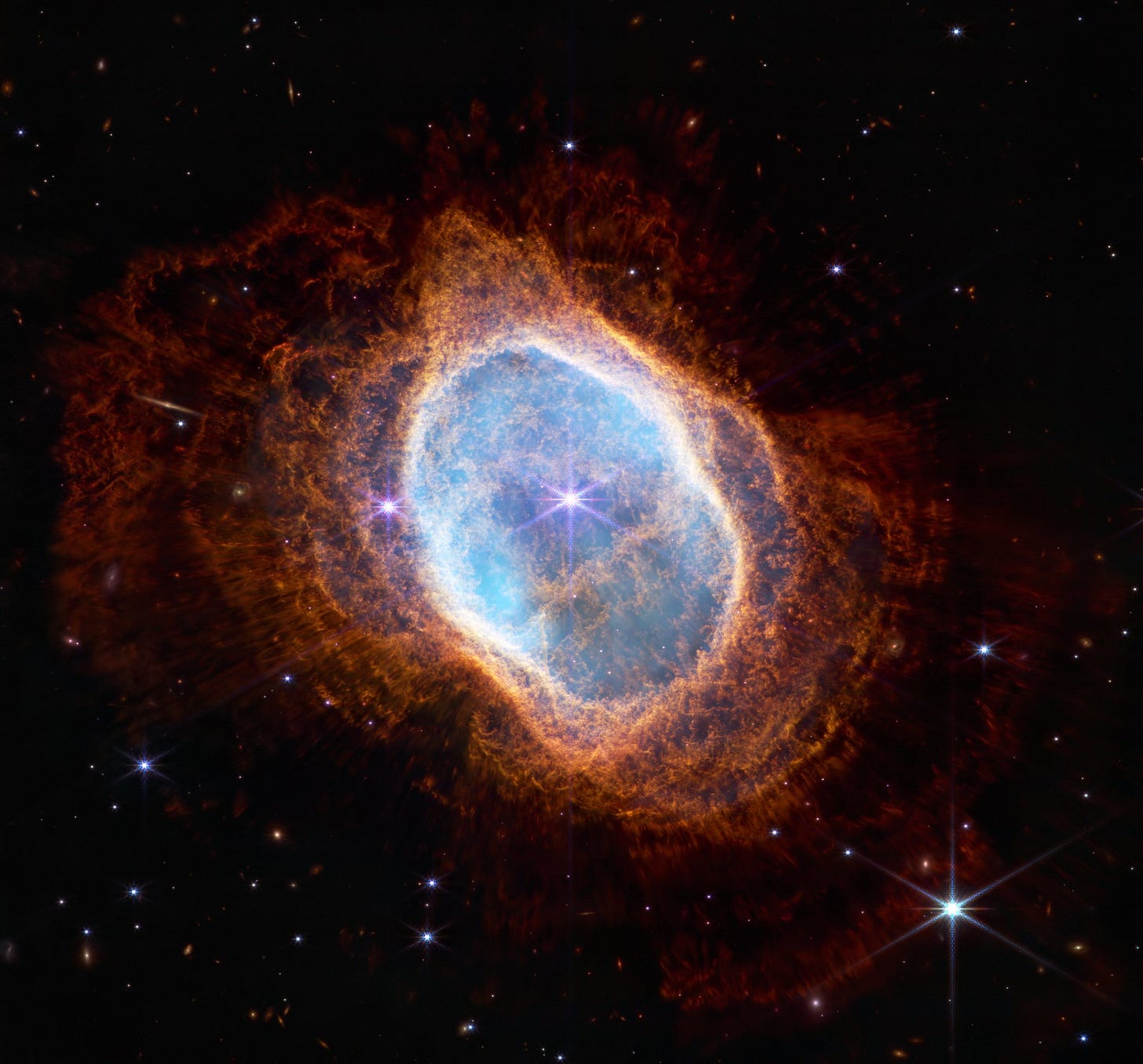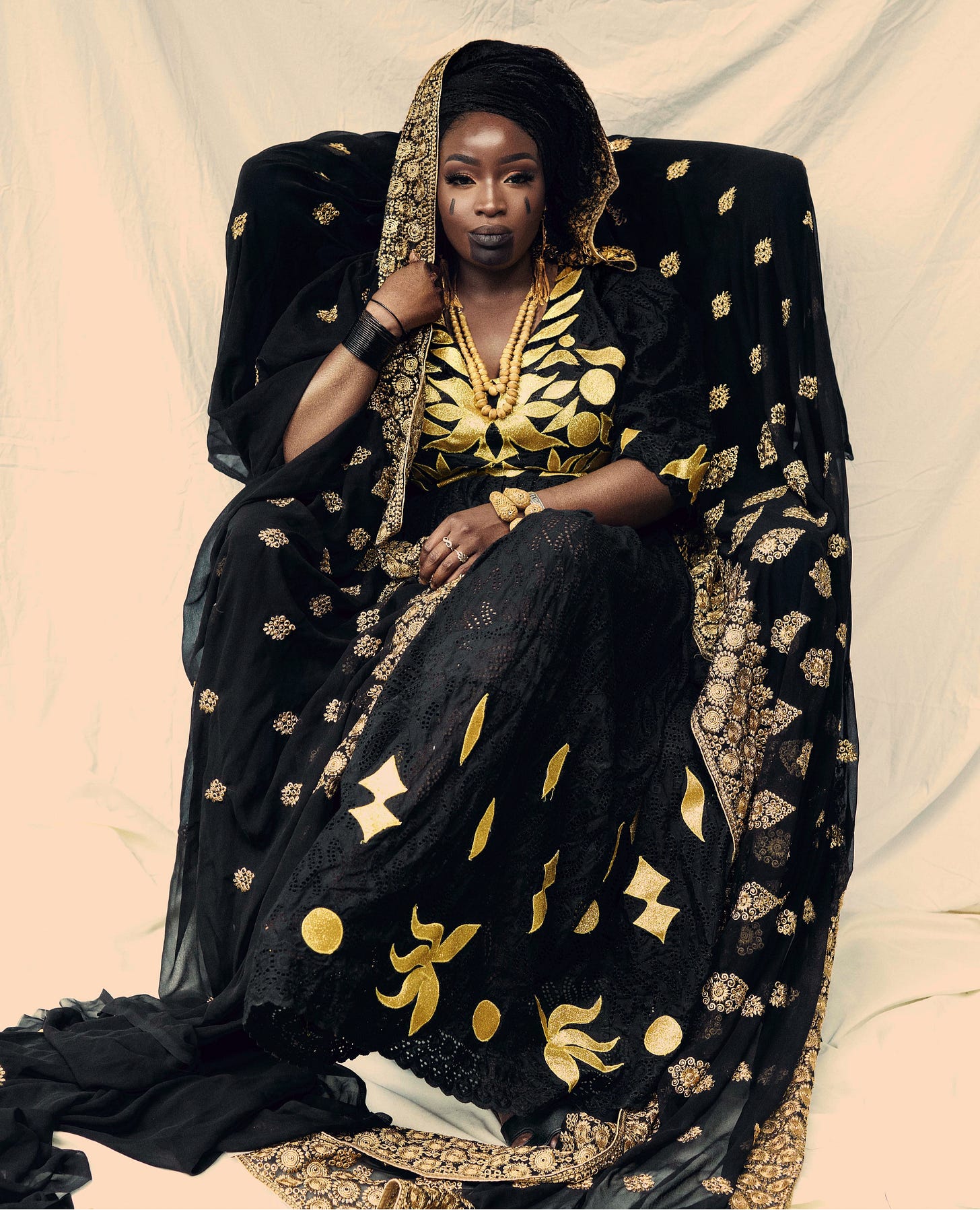“Most thinking people realize that we have come to the end of a paradigm that is not only not serving us, but is destroying us.”
This week’s post is the final installment of our six-week “slow read” of Dancing in the Flames by Marion Woodman and Elinor Dickson. For the last four weeks, only paid subscribers have been receiving these amplifications on the reading. But I’m sending this one out to everyone, in particular to welcome new subscribers to join us if you feel so moved. If you’re intrigued, there’s still time! These weekly posts will continue to be available to paid subscribers* to follow along at your own speed, and you’re welcome to join us tomorrow for our live gathering at 4-5:30pm PDT, as well as our upcoming talk with co-author Elinor Dickson on June 1st.
To those who have been reading along from the start, I know how much material we’ve gotten into in these six weeks! Given how much we’re exploring and how much it can stir up, this “slow read” may have felt very fast. We’ll have more time to digest it all and, of course, you can take this at your own pace and join in (or opt out) in whatever way you’re called. Thank you for your comments and your incredible engagement. I have read every single comment that you’ve shared. I’m moved by the stories and images that have arisen and the various expressions of how this material has impacted your waking and dream lives. Thank you.
Finally, for those paid subscribers who have not been reading along, there’s a whole calendar of non-book-related workshops and gatherings here, and more to come. If there’s a book you’d really love to explore as a group, drop a note below.
*Paid subscriptions make my work possible, but if you want to join us and finances are too tight to pay for a subscription, please reply to this email or send me a note at satyadoylebyock [@] substack.com. I don’t ask for any explanation! Just your honesty. All emails go directly to me.
Archive of Weekly Posts | Reading Schedule | Meeting Registration | Original Concept | Order the Book
Tomorrow: Sunday, May 18th, 4-5:30 pm PDT / 7-8:30 pm EDT | Note the Evening Time | Our second general, live discussion online. | Register here
Sunday, June 1st, 10-11:30 am PDT / 1-2:30 pm EDT | Conversation with the great co-author and dear friend of Marion Woodman, Elinor Dickson ✨ | register with the same link above — just once is good!
Please click the heart ❤️ on this post if you’re reading along with us, and feel free to share thoughts, quotes, and comments below.

“Our task must be to free ourselves from this prison by widening our circle of compassion to embrace all living creatures and the whole of nature in its beauty.” -Albert Einstein
Some Themes of Chapter 7 — the final chapter:
Oneness and our separation from oneness; matriarchy, patriarchy, and an “androgynous” third way; quantum physics; causality and synchronicity; the creative partnership between Jung and physicist Wolfgang Pauli; the Dark Goddess of consciousness as muse to scientists; the Black Madonna as an antidote to fascism; and more.
The chapter begins with notations about the breakdown of our climate and the proliferation of violence. Written thirty years ago, it certainly does not feel out of date.
“Underneath the obvious chaos is an even deeper chaos. Most thinking people realize that we have come to the end of a paradigm that is not only not serving us, but is destroying us.” (202)
Exploring Matriarchy?
Marion Woodman and Elinor Dickson explore ideas of Matriarchy as a social structure preceding Patriarchy, including a short summary of the history. As part of the amplification of this section, I’m including a few other authors whose writing has enhanced my understanding of matriarchy in contrast to the system of hierarchy, dominance, and division that we know so well.
The Patriarchs: The Origins of Inequality, by Angela Saini, is a stunning read that really expresses the inability to understand matriarchy through the lens of patriarchy. I know I’ve shared this before, but Saini’s conversation with
is also phenomenal, for a one-hour listen (or read).- is a new author to me, a woman articulating what matriarchy is and is not. Her pieces “Womanhood, redefined” and ”It’s not ‘Women Rule’” help to pull apart the very distinct differences between matriarchy and patriarchy, highlighting the importance of gender diversity in the former and the necessity of controlling gender expression in the latter.
In her piece “Matriarchy is Not a Mirror of Patriarchy,”
articulates the way the West too often conflates the structures of patriarchal social organization with matriarchy. Raised in a matriarchal African culture, her words ring with embodied clarity.
You think it means women ruling like men.
That’s not matriarchy. That’s patriarchy with rebranding. The West has no matriarchal legacy to speak from. You cannot recreate what you’ve never understood. And what the west doesn’t understand it colonises, extracts, distorts, or destroys. Then rebrands the narrative to frame itself the victor and saviour.
My people understood this when they first came in contact with westerners.
I don’t speak about matriarchy from books or borrowed language. I speak it as someone raised in it—within Fulani systems where lineage was not just a bloodline, but a governance structure.
Jallow then emphasizes the fact that strict gender roles and the gender binary itself have no place within a matriarchal system.
Where Western systems say “she is a woman, therefore she must nurture,”
we ask: is she nurturing?
And if she is not, we do not force her to perform it.Because forcing people into roles they cannot or should not hold breeds violence—especially when it is framed as virtue.
So when you see women harm as men do, or abuse power in the same systems, you are not witnessing some failure of femininity.
You are witnessing what happens when virtue is ascribed to gender instead of behavior.Many women are not natural-born nurturers.
They are masking coerced by Western femininity into performing roles that fracture them. Our cultures never demanded that.
We gave people space to live according to who they are, not who others need them to appear to be.That wasn’t regression. That was relational ethics.
And it was far more advanced than what you still call progress.

One more excellent piece from
: “Are Western Gender Norms Actually Evolving, or Are They Just a Reinvention of What Africa Knew All Along?”Woodman and Dickson are consistently exploring a way to hold everything. The goal for life-beyond-patriarchy is never expressed as a replacement of one hierarchy for another, one lopsided way of being for a different lopsided way of being. And, in fact, they never suggest moving towards a system of matriarchy, as some authors do. Instead, they speak to the development of a third, never yet lived, androgynous social system.
Moving into the ‘third sacred dream’ requires us to live from this center, the place of paradox, where the tension of the opposites is held in balance, the ‘both/and’ world of mind/body, masculine/feminine, sexuality/spirituality, life/death. To live from the center is to transcend the dualities and achieve wholeness. (208)
In the new paradigm to which they are speaking, human psychology has to mature to be able to hold the tension of the opposites.
In the universe of today’s physicists, uncertainty and paradox abound. (210)
The discoveries of quantum physics suggest that these seemingly irreconcilable modes of behavior, once considered a contradiction to be resolved, are not mutually exclusive and therefore do not demand resolution. Seeing ourselves in this way allows us to act both within ourselves and within the universe in a manner impossible or inconceivable to earlier generations. A higher level of consciousness is required for such a world view. (211)
The opposites are complementary, not contradictory. They are partners in the dance of life—partners, that is, in the ongoing interplay between the observer and the observed. (211)
The authors then delve into this tension within science that we are still wrestling with seemingly every day.
The world of opposites is a world of relativity, a world in which the observer creates his or her own reality and engages it with the reality created by others, a world in which all things are possible and all things coexist. As science has had to embrace the complementarity of wave/particle duality to absorb the revolution of the new physics, so will we all one day embrace the complementarity of the opposites of everyday life as we participate in the revolution of the new paradigm. (211)
And here they emphasize love with quite a bit of actual science to back it up: “Love is the dynamic of the opposites, holding them together in their opposition” (212).




